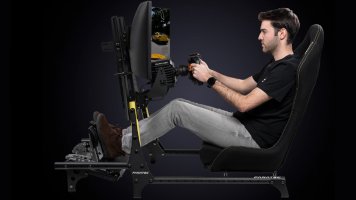D
Deleted member 197115
-
Deleted member 197115
I don't think it's G2, it was an eye opening step up from Odyssey Plus in image quality. It's just even at best settings I can squeeze out of it with OCed 3080, it's a pale, degraded representation of what I can see on monitor. Especially in ACC with HDR on.Did the G2 put you off VR ? Was the G9 with head tracking just that good?
Or was it a combination of both?
My field of view is completely covered, TrackIR allows me to an look at apexes and mirrors, I am getting 100+ fps with all settings on Epic and 110% resolution scale, after short period of adaptation getting same and even better times and racing feels just as immersive as in VR.
I am quite a pixel picker, so for me improved overall image quality makes it up completely for missing 3D depth.
In AC I can run same settings in VR and monitor with recommended 100% (200% native SS), but it still doesn't look as good as screen image. Some things just do not translate 1:1 and I am not sure if it's just lower resolution, certain effects are just not rendered the same way or are completely missing in VR.
I don't know what should happen in VR space to overcome current limitations, something very revolutionary for sure as jut jacking up resolutions does not work that well for this gen HW.
VR future driven by FB does not look too bright at the moment either.
And there is no one else having much incentive to burn in more money into this. Seems like big tech, and I mean tech, not social platforms or digital game store, just pretends that VR does not exist anymore. And why we have steep decline in new VR titles, because VR content unless it's racing or flying is plain stupid and 99.99% of games work much better on the screen.
Afraid our sim market is really small niche to make a noticeable dent. I was under impression that enterprise situation is much better but got my hands on some stats recently and to my surprise it's just a small fraction of game market.











